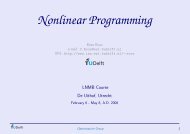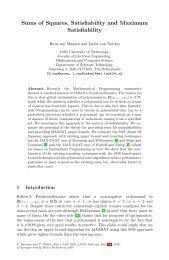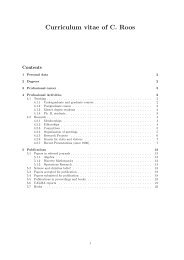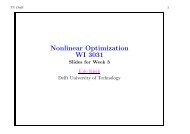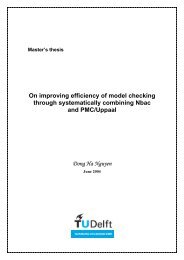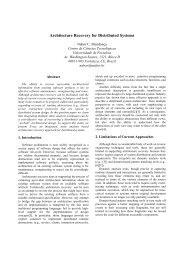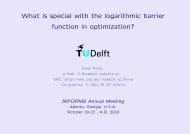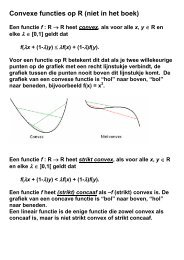Full-Newton step polynomial-time methods for LO based on locally ...
Full-Newton step polynomial-time methods for LO based on locally ...
Full-Newton step polynomial-time methods for LO based on locally ...
Create successful ePaper yourself
Turn your PDF publications into a flip-book with our unique Google optimized e-Paper software.
Computati<strong>on</strong> of νTo compute the barrier parameter ν we need to find an upper bound <str<strong>on</strong>g>for</str<strong>on</strong>g>Substitutingwe haveν = maxy,z(ϕ ′ (0) ) [2ψ′ϕ ′′ (0) = b(v) v (h + k)[1 ψ′′b (v) v2 (h + k) 2 − ψb ′ (v) v (h − . (9)k)2]12[ψ′′2y = h + k, z = h − k,[ψ′b(v) vy ] 2] 2b (v) v2 y 2 − ψ ′ b (v) vz2] = 2 [ ψ ′ b (v) ] 2ψ ′′b (v) = 2N(v) 2 .Thus we have proved the following lemma.Lemma 5 If n = 1, and N(t) is as defined be<str<strong>on</strong>g>for</str<strong>on</strong>g>e, then ν(x, s) = 2N(v) 2 .Theorem 3 If n ≥ 1 then ν = 2 ‖N(v)‖ 2 .Proof: This is an immediate c<strong>on</strong>sequence of Lemma 3 and Lemma 5.•27



